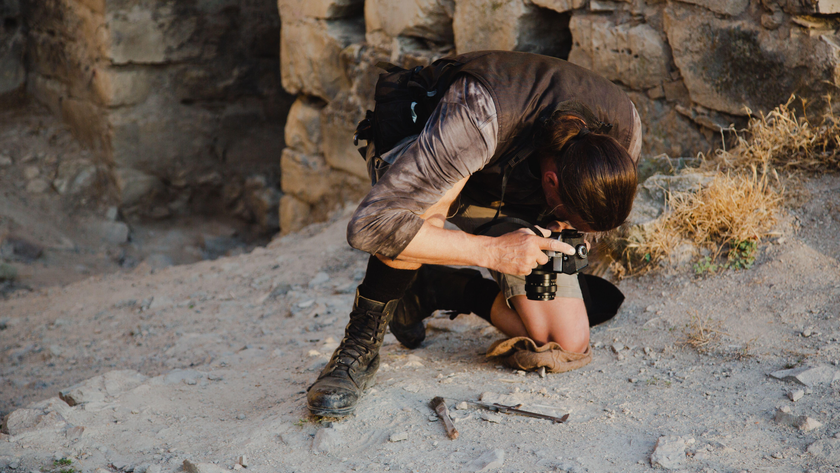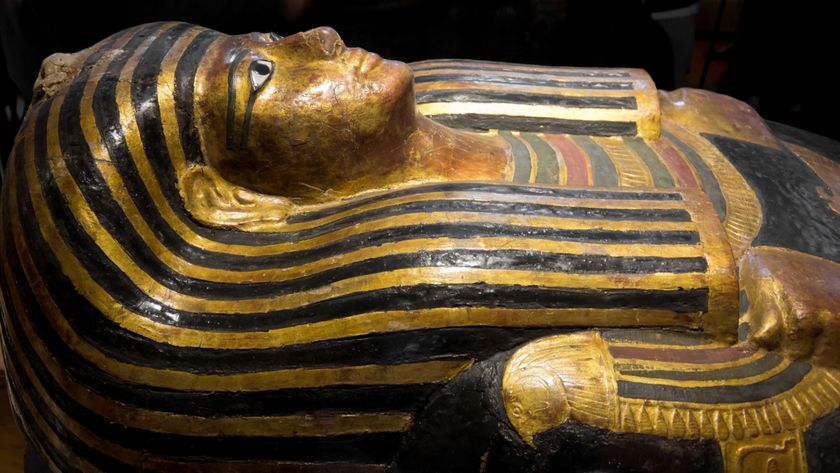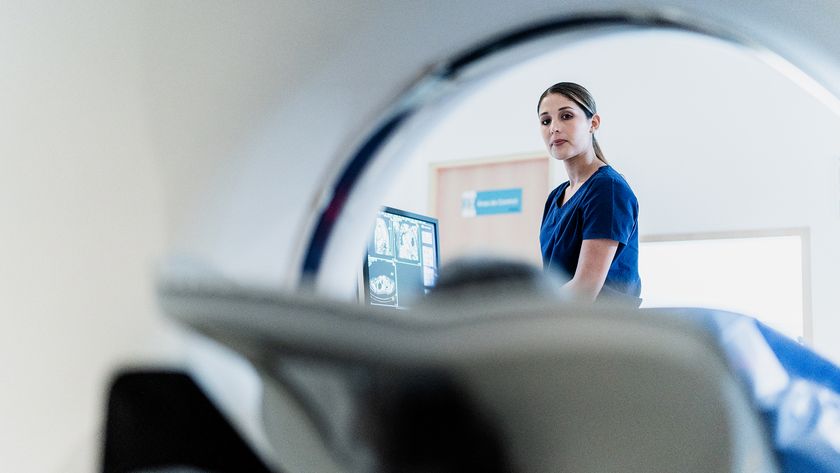The 9 Biggest Archaeology Findings of 2016
Archaeological findings
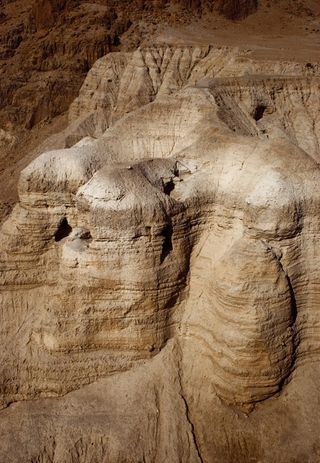
This year, archaeologists dug up a wealth of treasures that unveiled not only some strange practices (like building a pyramid within a pyramid within a pyramid) but also some of the long-held secrets of well-known artifacts. From new Dead Sea Scrolls to the youngest mummy ever found in Egypt, to a 1,500-year-old stone complex the size of 200 American football fields to the tomb of Jesus, here's a look at the biggest archaeology stories of 2016.
Noah's ark mosaic
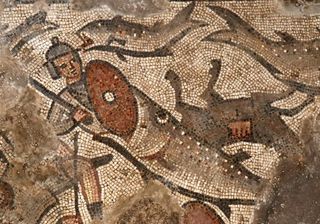
A mosaic depicting the story of Noah's ark was discovered this year within an ancient synagogue at the site of Huqoq in Israel. In the mosaic, the ark can be seen along with pairs of animals, including lions, bears and leopards. Another panel of the mosaic depicts the story of the parting of the Red Sea, showing ancient Egyptian soldiers, who were surrounded by overturned chariots, being eaten by giant fish. [Photos: Unusual Mosaics Decorated Ancient Synagogue in Israel]
Egypt's youngest mummy
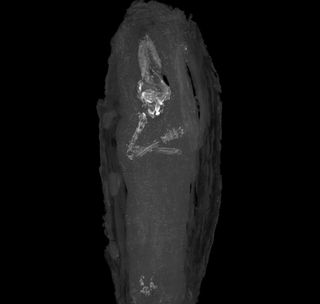
A miniature coffin in the Fitzwilliam Museum in Cambridge, England, holds what appears to be the youngest known Egyptian mummy. The coffin, made of cedar wood, was discovered at Giza in 1907 and dates back more than 2,500 years.
The fetus inside the coffin was only 16-18 weeks old after the time of gestation (when it was conceived) and likely died from a miscarriage. The coffin, which has tiny carvings on it, had been in the museum for over a century, but curators had assumed that it probably held internal organs from someone who was mummified. Not until CT scans were performed was the occupant of the tiny coffin revealed.
Virtually unwrapped scroll
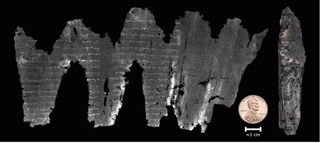
Using a series of CT scans, scientists were able to "virtually unwrap" a burnt Dead Sea Scroll dating back around 1,700 years. The charred scroll was discovered in 1970 at the site of En Gedi near the Dead Sea in Israel. The well-known "Dead Sea Scrolls" were discovered between 1947 and 1956 at another site, this one called Qumran, also near the Dead Sea.
The En Gedi scroll's charred state made it extremely fragile and impossible to physically unwrap. The scans revealed the text of the scroll, which consists of part of the Book of Leviticus. The precise date of the scroll isn't clear, though it appears to date back around 1,700 years or possibly a bit earlier, the researchers said. A similar CT-scan technique was used in 2015 to read charred 2,000-year-old scrolls from the site of Herculaneum in Italy.
Pyramid within a pyramid within a pyramid
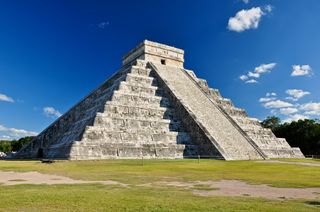
Archaeologists discovered that the El Castillo pyramid at Chichén Itzá in Mexico actually consists of a pyramid within a pyramid within a pyramid. The outermost pyramid was constructed sometime between 950 and 1000, while the pyramid within that pyramid was constructed sometime between 850 and 900, and a pyramid within that was constructed sometime between 600 and 800.
To make the discovery, scientists conducted an electrical resistivity survey of the outermost pyramid. Electrical resistivity is a widely used technique in archaeology, in which electrical currents are passed through a structure, or the ground, and the resistance encountered by the currents is measured. These measurements are then used to help determine what lies underneath a surface.
Ancient Egyptian boat tableau
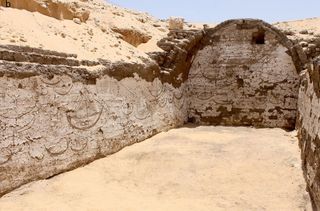
More than 120 boat carvings were discovered within a structure at the site of Abydos, in Egypt, that dates back more than 3,800 years. The structure is located near the tomb of pharaoh Senwosret III.
The largest carvings are nearly 5 feet (1.5 meters) in length and show "large, well-rendered boats depicted with masts, sails, rigging, deckhouses/cabins, rudders, oars and in some cases rowers," wrote expedition leader Josef Wegner in an article published in the International Journal of Nautical Archaeology this year. Inside the structure, archaeologists also found planks that they said are likely from a wooden boat that used to be inside the structure.
Kazakhstan megalithic site

Archaeologists announced the discovery of a 1,500-year-old stone complex in Kazakhstan that sprawls over 300 acres (120 hectares) of land, or more than 200 American football fields. A large amount of work remains to be done. However, archaeologists can already report the discovery of a saddle made partly of silver and stones carved with images of weapons and creatures. The complex may have been constructed by the Huns, a people who traveled across Asia and Europe and came into conflict with the Roman Empire.
Excavation of the "tomb of Jesus"
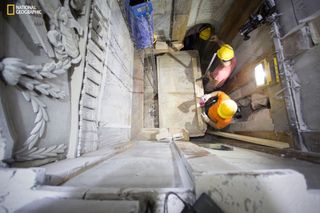
Archaeologists recently excavated a tomb in Jerusalem that people in ancient times believed held the remains of Jesus Christ. According to legend, the tomb was discovered in the fourth century after Helena, the mother of the Roman Emperor Constantine (who legalized Christianity and supposedly converted to it), traveled to Jerusalem and ordered excavations to find the tomb's location. After Jesus' tomb was identified, according to legend, the imperial family ordered that a shrine be built over the site. Records indicate that by 1555 the tomb had been damaged. In order to protect the tomb, marble cladding was built over it. The cladding covered and sealed the tomb.
In 2016, a team of archaeologists opened the tomb in order to carry out conservation work and learn more about the site. They found the limestone bed, which, according to legend, Christ's body had been placed on after he was crucified. The excavations may shed more light on the tomb and the legends behind it.
Unknown branch of humanity
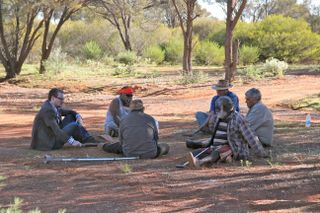
Sometime between 70,000 and 40,000 years ago, humans interbred with an unknown branch of humanity, a new genetic study revealed this year. It would have happened sometime after Homo sapiens migrated from Africa.
"We believe that they interbred with modern humans shortly before modern humans crossed into the ancient continent of Sahul — what is now Australia, New Guinea and Tasmania — some 50,000 to 60,000 years ago," Eske Willerslev, a palaeogeneticist at the University of Copenhagen in Denmark, told Live Science. The discovery was made by analyzing the genomes of present-day aboriginal Australians.
New Dead Sea Scrolls

Twenty-five previously unknown Dead Sea Scrolls were described this year in two separate books. The scrolls contain parts of the biblical books of Genesis, Exodus, Leviticus, Deuteronomy, Samuel, Ruth, Kings, Micah, Nehemiah, Jeremiah, Joel, Joshua, Judges, Proverbs, Numbers, Psalms, Ezekiel and Jonah. All of these scrolls were purchased by collectors in the antiquities market. Experts interviewed by Live Science said that some of the scrolls may be forgeries. These scrolls are just 25 of more than 70 Dead Sea Scrolls that have appeared on the antiquities market in the past 20 years.
Additionally, an Israel Antiquities Authority (IAA) team seized a papyrus dating to the seventh century B.C. that was bound for the antiquities market. The IAA said that the papyrus was found by looters in a cave in the Judean Desert near the Dead Sea. This papyrus may also be a forgery, some experts told Live Science.
In the wake of these newly discovered scrolls, the IAA has undertaken a new project to survey and excavate any remaining caves in the Judean Desert, near the Dead Sea, that may hold scrolls.
Sign up for the Live Science daily newsletter now
Get the world’s most fascinating discoveries delivered straight to your inbox.

Owen Jarus is a regular contributor to Live Science who writes about archaeology and humans' past. He has also written for The Independent (UK), The Canadian Press (CP) and The Associated Press (AP), among others. Owen has a bachelor of arts degree from the University of Toronto and a journalism degree from Ryerson University.
